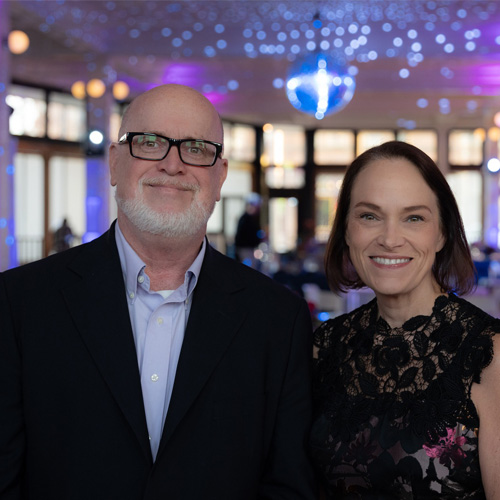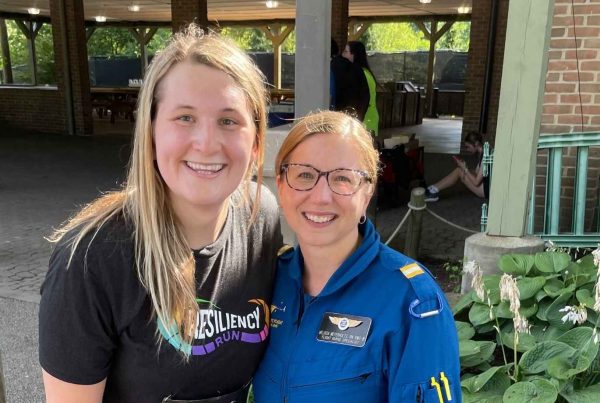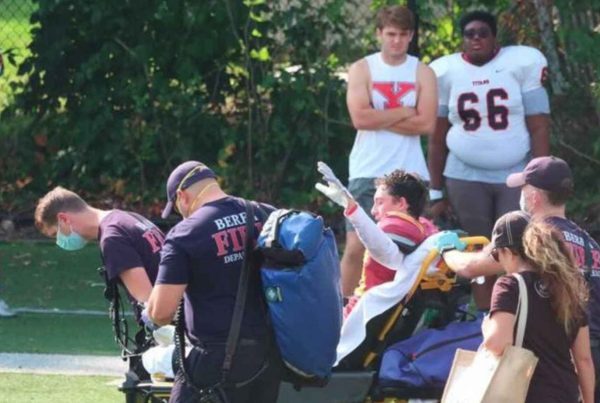“I had in my head that ablation was the last step. Dr. Ziv let me know that’s not necessarily the case. For some people like me, ablation earlier is better, it keeps the heart healthy.”
John Corlett has long had an affinity for MetroHealth. For more than a decade he’s gotten all his healthcare there. A former Vice President of Government Affairs and Community Relations for the System, he’s now a member of its Board of Trustees.
In early 2017, John was in Los Angeles visiting a friend when he noticed himself getting tired walking up a hill. He didn’t think much of it. Back in Cleveland, navigating through the airport, he was more tired than usual but dismissed it, again, blaming the long flight.
The next morning, John woke up tired. He went into the office anyway.
The day after that, he woke up short of breath. Concerned it was an asthma flare-up, he took an Uber to the MetroHealth Emergency Department.
John’s initial optimism of not being placed in the waiting area with more seriously ill patients gave way to concern once an echocardiogram revealed his heart was beating at 180 beats per minute.
Cardiologist William Lewis, MD, diagnosed John with atrial fibrillation, or AFib. It’s the most common type of irregular heartbeat. During AFib, the erratic signals in the upper chambers of the heart are out of sync with the lower heart chambers. AFib can lead to blood clots in the heart and puts people at higher risk of having a stroke or going into heart failure. John’s type of AFib is nonvalvular AFib, which is not caused by a problem with a heart valve.
The news wasn’t a complete surprise to John, who was 58 at the time. “I come from a family with a lot of heart issues,” he said. His mother had undergone open heart surgery two years before he was born, and both parents had developed AFib. But he didn’t have any other risk factors like high blood pressure.
Dr. Lewis, who became John’s cardiologist, admitted him into the hospital and started him on anti-arrhythmic medication. After five days of close monitoring, he went home.
John had only minor AFib episodes for the next six years.
In June 2023, John came down with COVID-19 for the first time. He had mild symptoms that went away quickly. But his AFib symptoms, which had been managed with medication, came back with a vengeance. He knew the warning signs – more fatigue than usual, climbing stairs one at a time instead of bounding up them.
John had only minor AFib episodes for the next six years.
John landed in the Emergency Department where he underwent cardioversion, a procedure that uses quick, low-energy shocks to the heart to restore a regular heart rhythm.
Cardiologist Elizabeth Kaufman, MD, who had seen John in the Emergency Department, deduced that he needed a cardiac ablation to stop/prevent irregular heartbeats. The procedure involves inserting catheters into a blood vessel in the groin (or shoulder or neck) and guiding them to the heart. Sensors on the tip of the catheter sends electrical signals and records the heart’s electrical activity. Once the physicians detect the exact area of the heart causing the irregular heartbeats, they use heat ablation to create small scars that block the irregular heart rhythms.
Dr. Kaufman reached out to Ohad Ziv, MD. Not long after, he was by John’s side in the Emergency Department.
John recalls the first time he met Dr. Ziv, MetroHealth’s Division Director of Electrophysiology. As an electrophysiologist, he is a cardiologist who specializes in atypical heart rhythms and the electricity of the heart.
Dr. Ziv, John said, “appeared out of nowhere.” Accompanied by a cardiology fellow, Dr. Ziv started talking with John about cardiac ablation – what was involved and why he thought John needed one.
“He spent a lot of time with me,” John said. “He gave me a thorough explanation of my condition. The conversation I had with him gave me a clearer view of AFib than I had before. After that I knew, ‘This is the man I want to do my ablation.’”
John went home that day.
One week later, before John could come back in for the ablation, originally scheduled for mid-July, he ended up back in the Emergency Department in AFib. After having a second cardioversion, he went home.
On July 5, John came in for the cardiac ablation. A catheter was inserted in a blood vessel in the groin and guided up to the heart. Sensors on the tip of the catheter send electrical signals and record the heart’s electrical activity. Once Dr. Ziv pinpointed the location of the irregular heartbeats, he used heat ablation to create small scars that block the irregular heart rhythms.
While the actual ablation typically takes between 30-60 minutes, John was under anesthesia for more than three hours.
He woke up with huge bruises on his leg where the catheter was inserted (the blood thinners he takes to help prevent a stroke increases the risk of bruising). Apart from that, he had no complications. He went home the next morning.
John resumed his normal activity after a couple weeks and had several follow-up appointments with Dr. Ziv for a year.
He hasn’t had any AFib episodes since.
“I feel great, I have great energy,” he said.
Because alcohol can be a trigger for AFib, John has curtailed his alcohol consumption. He didn’t have any alcohol for the first five months after the ablation. Today, instead of a glass of wine every night with dinner, he caps his alcoholic intake to two drinks a week. He’s also lost 25 lbs., a combination of drinking less and walking more, and using a nasal strip to keep his sleep apnea (which he was diagnosed with in late July 2023) under control.
He also has continued to take a blood thinner every night.
John is part of a clinical trial – one of several ongoing ones in the Heart and Vascular Center for AFib and other treatments – that is looking at a new approach to ablation of AFib.
Dr. Ziv and his colleagues are identifying which patients who undergo ablation around the pulmonary veins to treat AFib show evidence of additional areas of low voltage/abnormal electrical signal outside the pulmonary veins in the top left chamber of the heart. They believe that these areas of low voltage contribute to Afib and, if left alone, would hasten the recurrence of AFib within 12 months.
Patients with areas of the low voltage are randomly assigned to one of two groups – one who gets additional ablation at those areas and one who gets it left alone. Those patients who do not have those low voltage areas are still followed in a registry.
Because John did not have low voltage in his top chamber, he was placed in the registry.
Researchers will begin analyzing patient data later this year, Dr. Ziv said.
Back in 2010, the year Dr. Ziv joined MetroHealth, the standard practice was to not offer ablation to patients until they had exhausted all available medications to treat the condition.
That thinking has since changed in medical circles, with cardiologists referring patients for ablation sooner if they feel it could benefit them.
“I review the available medications and give them information about ablation to make sure they have the whole picture,” Dr. Ziv said.
“Treating patients who have been in AFib for a relatively short period of time is a fairly straightforward procedure,” he said. “But if a patient has been living with AFib longer, for several years, it’s harder to treat – but that’s where we shine. That is our real specialty at MetroHealth.”
While AFib is a recurring disease that doesn’t have a cure, most patients will be able to manage their symptoms well enough, either through medication or ablation, or both.
“I had in my head that ablation was the last step,” John said. “Dr. Ziv let me know that’s not necessarily the case. For some people like me, ablation earlier is better, it keeps the heart healthy.”
MetroHealth Heart & Vascular Center
Our team is also committed to state-of-the-art research that could help prevent or treat cardiovascular disease.
Appointments: 216-778-2328 (BEAT) Pediatric Appointments: 216-778-2222.
Do you want to help patients like John? The MetroHealth Foundation is making a difference every day. Learn more or give at metrohealth.org/foundation.

















